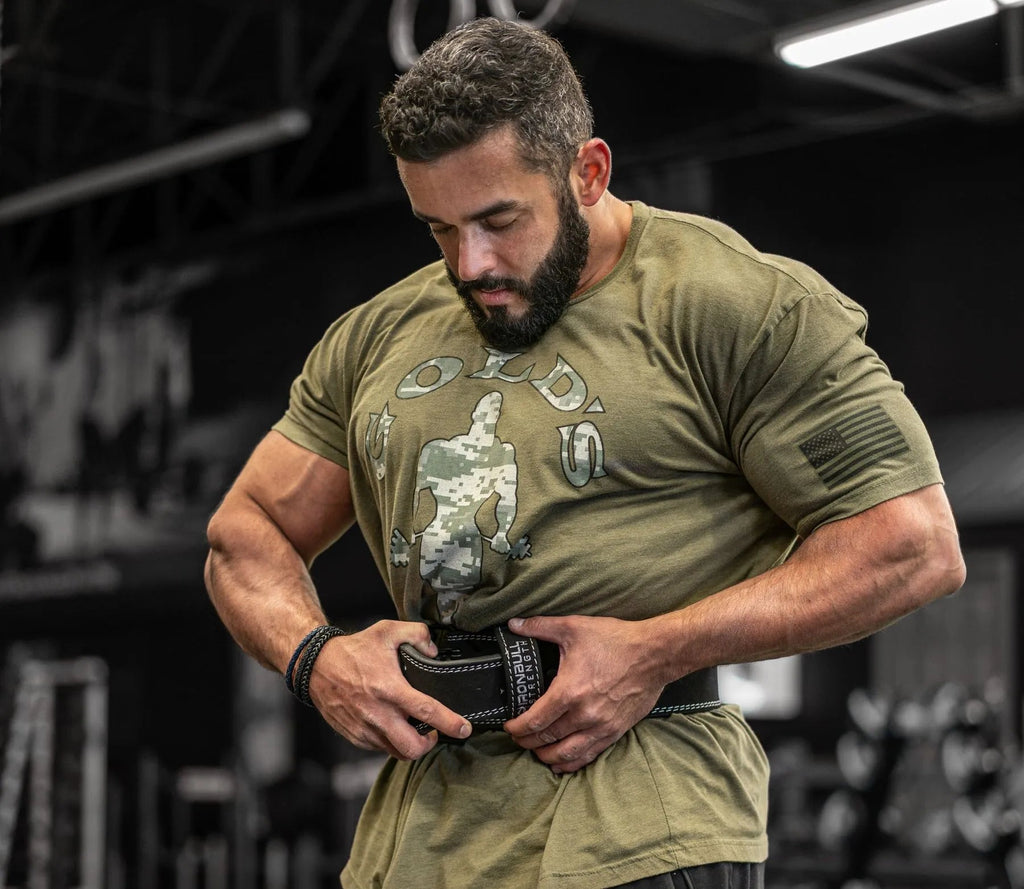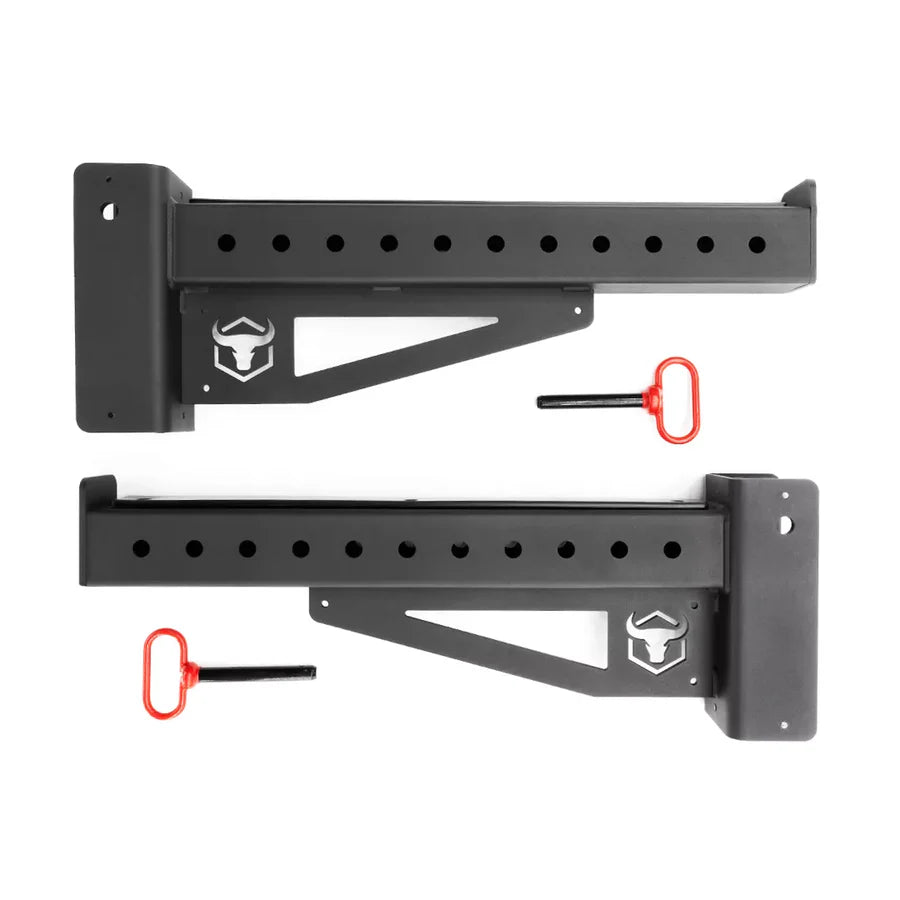Sangles de levage rembourrées ou non rembourrées : choisir la bonne option

Comprendre le rôle des sangles de levage
Les sangles de levage sont comme une paire de mains supplémentaire qui vous aide à tenir des poids lourds.
Elles renforcent votre force de préhension et votre stabilité, surtout lorsque vous soulevez des objets lourds. Imaginez essayer de tenir un poisson glissant à mains nues ; c'est ce que l'on ressent en soulevant des objets lourds sans sangles.
Mais avec eux, c'est comme avoir une prise solide sur une poignée robuste.
Lorsque vous soulevez des objets, votre prise est souvent la première chose à lâcher.
Les sangles de levage aident à fixer les haltères ou les barres à vos mains, afin que vous puissiez vous concentrer sur votre forme et soulever plus lourd sans vous soucier de la défaillance de votre prise.
C'est comme un filet de sécurité pour vos mains. Pour ceux qui recherchent des options de base, pensez à notre collection de sangles de levage .
Parlons maintenant des deux principaux types de sangles : rembourrées et non rembourrées. Choisir la bonne sangle peut faire toute la différence dans votre entraînement.
C'est comme choisir entre une chaise rembourrée et un banc. Les deux ont leur utilité, mais l'un pourrait être plus confortable pour vous.
Que sont les sangles de levage rembourrées ?
Les sangles de levage rembourrées sont dotées d'un rembourrage supplémentaire, souvent en mousse ou en gel. Elles agissent comme un coussin moelleux sur vos poignets.
Ce rembourrage supplémentaire est axé sur le confort et la réduction de la tension du poignet lors de séances de levage longues ou intenses.
Si vous avez déjà senti vos mains et vos poignets se fatiguer ou devenir douloureux pendant une séance d'entraînement, les sangles rembourrées pourraient être votre solution.
Ils sont idéaux pour réduire la fatigue des mains et l'inconfort du poignet, en particulier lorsque vous êtes là pour un long trajet.
Avantages des sangles de levage rembourrées
L'un des principaux avantages des sangles de levage rembourrées est leur confort accru. Le rembourrage répartit la pression sur vos poignets, procurant une sensation de douceur plutôt qu'une pression trop forte.
Le rembourrage empêche également les sangles de s'enfoncer dans votre peau, vous offrant ainsi une prise sûre sur la barre ou l'haltère sans le facteur douleur.
Un autre avantage est la réduction de la tension au niveau du poignet. Le rembourrage soulage la tension et prévient les blessures.
De plus, le rembourrage supplémentaire ajoute de la durabilité, protégeant les sangles de l'usure au fil du temps.
Inconvénients des sangles de levage rembourrées
Si vous recherchez un contrôle total lors de vos soulevés de charges lourdes, les sangles rembourrées ne sont peut-être pas la meilleure option. Le rembourrage améliore le confort, mais peut vous donner l'impression de moins bien contrôler votre prise, sans pour autant restreindre vos mouvements.
Il s’agit plutôt d’un changement subtil dans la façon dont vous vous sentez connecté au poids, plutôt que d’une limitation.
Le rembourrage peut également réduire la sensation tactile du poids, affectant ainsi votre contrôle précis de la prise en main.
Un autre inconvénient est que les sangles rembourrées peuvent emprisonner la chaleur et la transpiration, ce qui entraîne une expérience moins agréable lors de longues séances d’entraînement.
Que sont les sangles de levage non rembourrées ?
Les sangles d'haltérophilie non rembourrées sont plus simples. Elles sont fabriquées à partir de matériaux comme le coton ou le nylon, sans rembourrage supplémentaire.
Considérez-les comme une option simple pour améliorer votre force de préhension.
Ces sangles offrent une connexion plus directe à la barre ou à l'haltère, vous permettant de ressentir le poids au plus près. C'est comme conduire une voiture sans direction assistée : vous ressentez chaque bosse et chaque virage.
Avantages des sangles de levage non rembourrées
L'un des principaux avantages des sangles de levage non rembourrées est leur plus grande flexibilité. Leur conception plus simple permet un ajustement plus serré et plus sûr autour des poignets. C'est comme enrouler un bandage autour de votre main.
Sans amorti, vous bénéficiez d'un retour d'adhérence plus direct, ce qui peut améliorer votre contrôle et votre technique. C'est comme jouer d'un instrument de musique : vous voulez ressentir chaque note.
Les sangles non rembourrées sont également généralement plus économiques, ce qui les rend accessibles à tous les haltérophiles.
De plus, leur conception compacte les rend faciles à ranger et à transporter. C'est comme un outil de poche puissant.
Inconvénients des sangles de levage non rembourrées
À l'inverse, les sangles non rembourrées peuvent être moins confortables. Sans ce rembourrage supplémentaire, vous pourriez ressentir une gêne lors de séances de musculation longues ou lourdes. C'est comme rester assis sur un banc dur pendant des heures.
L'absence de rembourrage augmente la pression exercée sur vos poignets, ce qui peut entraîner des tensions ou de la fatigue. C'est comme porter un sac à dos lourd sans bretelles rembourrées.
Il existe également un risque d'irritation cutanée dû au contact trop étroit avec le matériau du bracelet. C'est comme porter un pull qui gratte contre la peau.
Et même si les sangles non rembourrées sont plus respirantes, la transpiration peut toujours s'accumuler pendant les longues sessions.
Sangles de levage rembourrées ou non rembourrées : principales différences
En matière de confort et de maintien, les sangles rembourrées sont un atout majeur. Elles offrent un meilleur amorti et un meilleur maintien, réduisant ainsi l'inconfort au poignet lors de levées de poids lourds ou prolongées. C'est comme choisir un canapé moelleux plutôt qu'un fauteuil dur.
En termes d'adhérence et de contrôle, les sangles non rembourrées sont les meilleures. Elles offrent une prise plus directe et un meilleur contrôle de la barre, ce qui les rend idéales pour les exercices techniques. C'est comme une poignée de main ferme plutôt qu'une prise glissante.
Pour plus de durabilité et d'entretien, les sangles rembourrées nécessitent un peu plus de soin pour éviter l'accumulation d'humidité. Les sangles non rembourrées sont plus simples à entretenir et à nettoyer, offrant une durée de vie plus longue et un minimum de tracas. C'est comme choisir entre une plante exigeante et une plante facile à entretenir.
En termes de volume et de flexibilité, les sangles rembourrées ont tendance à être plus volumineuses, ce qui peut potentiellement restreindre les mouvements.
Les bretelles non rembourrées sont plus fines et plus souples, permettant un ajustement plus serré et plus adaptable. C'est comme porter un costume sur mesure plutôt qu'un manteau oversize.
Enfin, il y a le facteur coût. Les sangles rembourrées sont généralement plus chères en raison des matériaux et du rembourrage supplémentaires.
Les sangles non rembourrées sont généralement plus abordables, ce qui en fait un choix populaire pour les haltérophiles soucieux de leur budget.
Si vous recherchez quelque chose de spécialisé, pensez aux sangles de levage Figure 8 pour des besoins de levage spécifiques.
Quelle sangle de levage choisir ?
Si vous soulevez des charges lourdes ou que vous pratiquez fréquemment des séances prolongées, les sangles rembourrées sont la meilleure option. Elles réduisent la tension au poignet et offrent un confort accru, ce qui les rend idéales pour les entraînements marathon. C'est comme avoir une chaise confortable pour de longues séances d'étude.
Pour plus de polyvalence et un budget limité, les sangles non rembourrées sont la solution idéale. Elles offrent une connexion plus directe à la barre ou à l'haltère et sont plus abordables. C'est comme choisir un outil polyvalent qui fait le travail sans se ruiner.
Les débutants préféreront peut-être des sangles rembourrées pour leur confort. Elles permettent de se concentrer sur la posture sans se soucier de l'inconfort au poignet.
C'est comme un outil adapté aux débutants qui vous aide à apprendre les bases. Si vous souhaitez maximiser votre potentiel de levage, les sangles de levage Pro sont une excellente option.
Pour les entraînements courts ou les exercices techniques, les sangles non rembourrées sont le meilleur choix. Elles offrent une meilleure adhérence et un meilleur contrôle, ce qui les rend idéales pour les cleans ou les snatches puissants. C'est comme un outil de précision pour un travail précis.
Choisir les sangles de levage qui vous conviennent
Les sangles de levage rembourrées et non rembourrées offrent chacune leurs propres avantages, et le choix dépend en fin de compte de vos préférences personnelles et de votre style d'entraînement.
Les sangles rembourrées offrent davantage de confort, de durabilité et de protection du poignet, ce qui les rend idéales pour les haltérophiles ou les entraînements prolongés. Les sangles non rembourrées offrent une meilleure adhérence, une meilleure flexibilité et un prix abordable, ce qui en fait une excellente option pour les haltérophiles techniques ou les personnes à petit budget.
Tenez compte de vos besoins spécifiques en musculation, de vos préférences en matière de confort et de votre budget pour choisir les sangles de musculation qui amélioreront vos performances en salle. N'oubliez pas : choisir les bonnes sangles peut faire toute la différence dans votre expérience de musculation.


